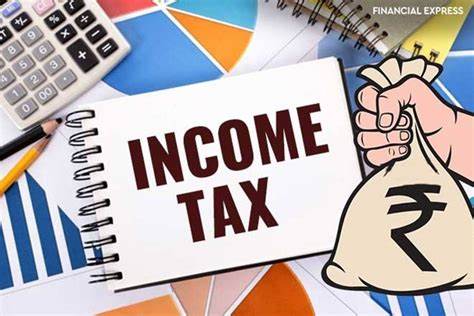5.5 crore may have shifted to new tax regime, say I-T officials

5.5 crore may have shifted to new tax regime, say I-T officials
According to initial estimates from the revenue department, approximately 5.5 crore taxpayers have potentially migrated to the new tax regime during the ongoing financial year. This new tax regime underwent significant changes in the budget, with the aim of making it more attractive to taxpayers. The majority of these taxpayers reportedly have a taxable income of up to Rs 7 lakh. The information was shared by a senior government official with Business Standard.
This number holds particular significance due to the government’s efforts to revamp the new tax regime in the budget for the financial year 2024, which was presented in February. The changes were introduced in an attempt to encourage more taxpayers to adopt the new regime. It’s worth noting that a significant portion of taxpayers had refrained from adopting the new tax regime since its launch in the fiscal year 2020-21.
However, it’s important to mention that the report’s authenticity and accuracy could not be independently verified by Moneycontrol, the source cited in your message. These kinds of estimates and reports are subject to revision and confirmation as more data becomes available and is analyzed.
In summary, the reported migration of around 5.5 crore taxpayers to the new tax regime reflects the potential impact of the recent changes introduced in the budget. Nevertheless, the accuracy of the report is subject to verification, and it’s important to await official confirmation and detailed data before drawing conclusive insights.

The official’s statement underscores the adaptive nature of the new tax regime and the government’s commitment to giving taxpayers the flexibility to choose the approach that best suits their financial preferences. Here’s a closer look at the significance of this statement:
1. Openness to Experimentation:
The acknowledgment that many taxpayers are open to experimentation with the new tax regime reflects a recognition of individuals’ varying financial situations and the desire to explore options that might be more advantageous. By encouraging experimentation, the government is empowering taxpayers to make informed decisions about their tax planning strategies.
2. Benefit Determination:
The ability to experiment allows taxpayers to assess whether the new tax regime aligns with their financial goals and circumstances. This consideration is crucial, as taxes play a substantial role in individuals’ financial planning. By determining the benefits of the new regime through practical experience, taxpayers can make more informed choices about their tax approach.
3. Reverting to the Old Tax Regime:
The option for taxpayers to revert to the old tax regime in the following financial year emphasizes the government’s commitment to providing a safety net. This acknowledges that not every taxpayer’s situation is the same and that preferences might change over time. The ability to switch back provides a sense of security, assuring taxpayers that they can always return to a familiar system if needed.
4. Balancing Flexibility and Stability:
Offering the option to experiment while maintaining the possibility to return to the old regime strikes a balance between flexibility and stability. Taxpayers can explore new approaches without the fear of being locked into a decision that might not suit them in the long run.
In essence, the official’s statement emphasizes the government’s understanding of taxpayers’ diverse needs and preferences. It showcases a commitment to an adaptable tax structure that accommodates changing circumstances and allows individuals to make informed choices about their financial planning. This approach not only benefits taxpayers but also contributes to a more responsive and effective tax system overall.
The clarity regarding the precise number of individuals choosing the new tax regime is expected to emerge in the upcoming assessment year, which is 2024-25. During this assessment year, data will be available to demonstrate the earnings and corresponding tax obligations for the ongoing financial year.
As of the income-tax department’s data for the financial year 2022-23, certain figures provide insight into the distribution of taxable incomes among taxpayers:
– Around 4.84 crore taxpayers reported a taxable income of up to Rs 5 lakh.
– More than 1.12 crore individuals reported a taxable income falling between Rs 5 lakh and Rs 10 lakh.
– The number of taxpayers with taxable incomes ranging from Rs 10 lakh to Rs 20 lakh amounted to 47 lakh.
These statistics highlight the varying income levels of taxpayers and the broad spectrum of taxable incomes across different income brackets.
The availability of this data underscores the importance of comprehensive financial data analysis for making informed policy decisions and gauging the effectiveness of changes to tax regimes. The figures indicate that a considerable number of taxpayers fall within the specified income ranges, which further highlights the significance of assessing their response to the new tax regime introduced in recent times.
As with any assessment year, the upcoming data will be crucial in determining the impact and success of policy changes, such as the revamping of the tax regime. It will provide insights into taxpayers’ choices, their financial behaviors, and the overall efficacy of the introduced measures.
The distribution of taxpayers based on their taxable income ranges provides a comprehensive understanding of the income landscape among taxpayers in India. Here’s a breakdown of the figures as mentioned in your message:
– Taxpayers with taxable income between Rs 20 lakh and Rs 50 lakh: 20 lakh individuals.
– Taxpayers with taxable income between Rs 50 lakh and Rs 1 crore: 3.8 lakh individuals.
– Taxpayers with taxable income of more than Rs 1 crore: 2.6 lakh individuals.
This data showcases the number of taxpayers within various income brackets and provides insights into the distribution of income levels across the population.
Furthermore, the information reveals the tax department’s statement regarding the number of income-tax returns (ITRs) filed for the assessment year 2023-24. The data indicates that, as of July 31, 2023, over 6.77 crore ITRs were filed, marking a significant increase of 16.1 percent compared to the total ITRs filed by the same date in the previous assessment year (2022-23).
This increase in the number of ITRs filed could reflect multiple factors, including changes in tax regulations, increased compliance, and an expanding taxpayer base. It indicates a growing awareness and participation among individuals in fulfilling their tax obligations.
The comprehensive overview of taxpayer distribution and the increase in ITR filings signify the importance of accurate and up-to-date data analysis for policymakers and tax authorities. This data assists in assessing the effectiveness of tax policies, understanding taxpayer behavior, and making informed decisions that impact the fiscal landscape of the country.




